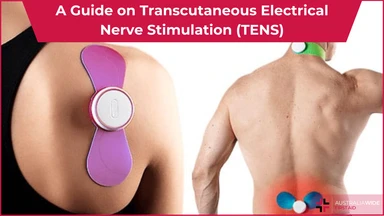What is Shocktober?


Only 1 in 10 Australians that suffer from cardiac arrest survive the initial attack.
In efforts to combat this terrifying statistic, campaigns such as Shocktober are extremely important for educating the community about identifying cardiac arrest signs and treating someone who is experiencing cardiac arrest.
Spanning the month of October, Shocktober is a campaign aimed at raising awareness and to educate the community about learning CPR and how to use automated external defibrillators (AEDs).
Across Australia, the survival rate of cardiac arrest outside the hospital stands at a staggeringly low 10% with trends showing no signs of improvement any time soon. That means out of the 25,000 Australians that suffer from out of hospital cardiac arrests, only 2,500 survive.
Sudden cardiac arrest can happen to anyone and at any time and with no prior signs or warnings. With time being of the essence, bystanders play a vital role in improving cardiac arrest survival rates.
According to St John Ambulance of Australia, there has been an increase in bystander CPR in the past decade from 48% to 62% with patients who receive bystander CPR having a higher survival rate of 14%.
This October, take part in learning the skills that could help save someone’s life.
Sudden cardiac arrest is the abrupt loss of heart function, breathing and consciousness that is usually due to a problem with the heart’s electrical system.
This causes a disruption in the heart’s pumping function and eventually stops blood from flowing all over the body. If not treated immediately, sudden cardiac arrest can lead to death. Sudden cardiac arrest is also often mistaken for a heart attack, which happens due to a blockage in the blood flow to a part of the heart.
The usual cause of sudden cardiac arrest is an abnormal heart rhythm (arrhythmia). When something goes wrong, the heart can beat too fast, too slow, or irregularly. Most cases of arrhythmias are harmless; however, they can sometimes lead to sudden cardiac arrest.
Other conditions that can lead to sudden cardiac arrest include coronary artery disease, a heart attack, an enlarged heart, valvular heart disease, and congenital heart defects.
Signs that occur before sudden cardiac arrest can include:
Other signs of sudden cardiac arrest that are immediate can include:
Performing first aid during cardiac arrest is crucial to increase the chances of survival. In following the steps below, you’ll not only help maintain the casualty’s condition while waiting for emergency help to arrive, but you could also take great strides towards saving their life in the process:

CPR is an acronym for cardiopulmonary resuscitation. It is a first aid procedure to assist a person whose heart has stopped beating through chest compressions that imitate the pumping of the heart. In addition to this, these physical compressions will help get blood circulating throughout the body and deliver oxygen to the brain.
Conventional CPR often involves chest compressions and mouth-to-mouth breathing. High-quality CPR should be performed with these five critical components in mind:
Where possible, CPR is often accompanied by an AED. On the initial onset of cardiac arrest, CPR is first performed without interruption until an AED is found and retrieved by another person. CPR and AED would then be applied alternately and as directed by the AED.
Head to our article on Cardiopulmonary resuscitation for more information about how to provide high-quality CPR.

A defibrillator or automated external defibrillator (AED) is a device that sends electric pulses, or a shock, to the heart with the aim of restarting a heart that has stopped beating. It can also help to prevent or correct arrhythmia.
The AED is a portable, compact, and lightweight machine that essentially gives the heart a ‘jump start’ to restore its normal rhythms. The AED will automatically analyse the heartbeat of a cardiac arrest victim and deliver an electrical shock to the heart as needed.
In the event of cardiac arrest, it is crucial that an ambulance is called at the first sign, followed by emergency first aid procedures, which includes CPR and the application of an AED.
Sudden cardiac arrest can occur without warning; therefore, it’s important to know how to perform CPR and identify the location of an AED before symptoms worsen.
To use an AED, follow the four steps as outlined below:
The first signs of cardiac arrest can occur suddenly and unexpectedly, and they can escalate quickly.
Time is of the essence when it comes to performing first aid on a cardiac arrest victim. As promoted by Shocktober, it’s very important for everyone to learn the basics of CPR and how to operate an AED.
To learn more about the first aid procedures to treat cardiac arrest and a variety of other medical emergencies, book a First Aid Course with Australia Wide First Aid today!

March 25, 2025
Explore non-traditional paths to sobriety, including mindfulness, yoga, nutritional therapy, and community-based support, for a personalized approach to recovery.

September 7, 2022
Menopause is the final period, when a woman, trans man, or non-binary person assigned female at birth's ovaries run out of eggs and the body can no longer ovulate. Menopause comes with several symptoms, complications, and treatment options.

July 26, 2024
Transcutaneous Electrical Nerve Stimulation (TENS) is a therapeutic method of pain relief. It utilises an electrical device that emits electrical currents and streams the impulses via electrode patches attached to the skin.